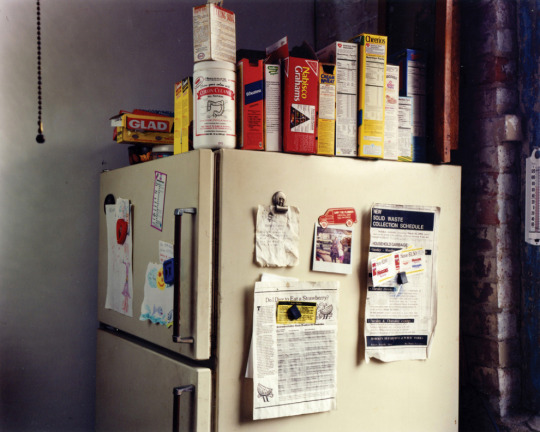#Moyra Davey
Text
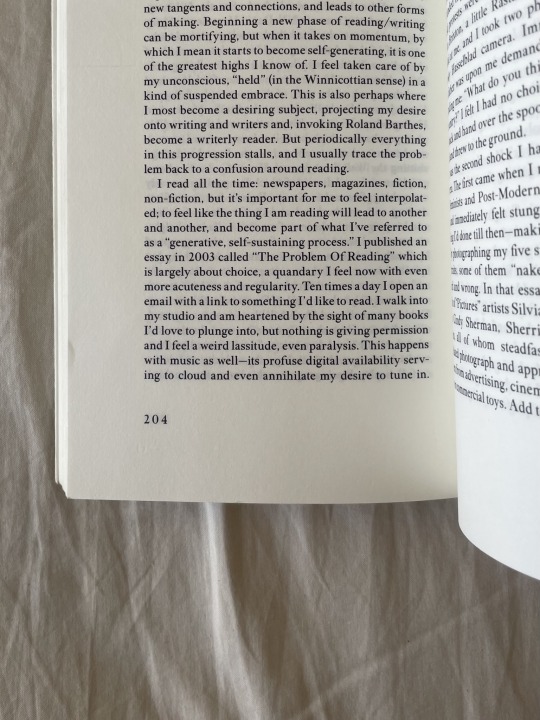
— index cards, moyra davey
#written extracts i like#booklr#index cards#moyra davey#books#book quotes#bookblr#writing#reading#on reading#bookstagram#literary quotes#litblr
181 notes
·
View notes
Text

Moyra Davey, “Dust, Amp, Trees” (2016), 4 C-prints, tape, postage, ink, 12 x 18 inches each, 24 1/2 x 36 1/2 inches overall (all images courtesy the artist and Murray Guy, New York) (click to enlarge)
32 notes
·
View notes
Photo

Moyra Davey
The Faithful
Leonard & Bina Ellen Art Gallery, Montreal
February 16 – April 9, 2022
230 notes
·
View notes
Photo
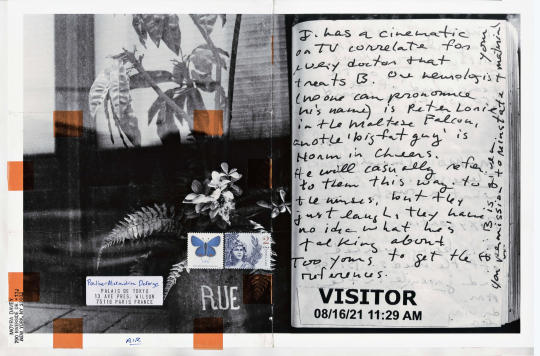

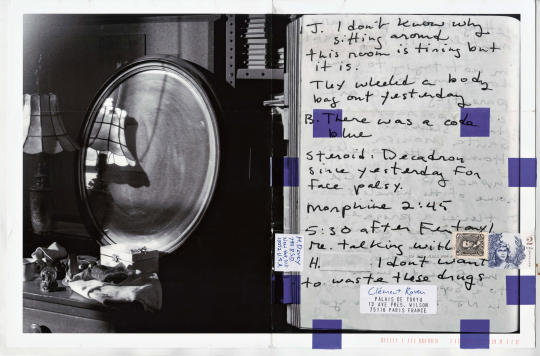
Moyra Davey - Visitor (detail). 2022
47 notes
·
View notes
Photo
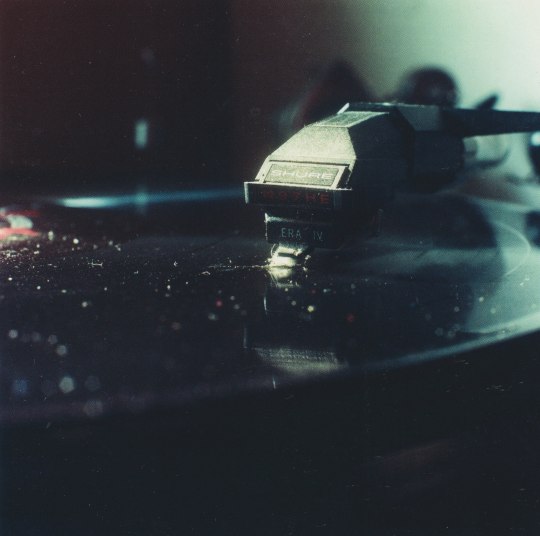
Moyra Davey, Shure, 2003
202 notes
·
View notes
Text
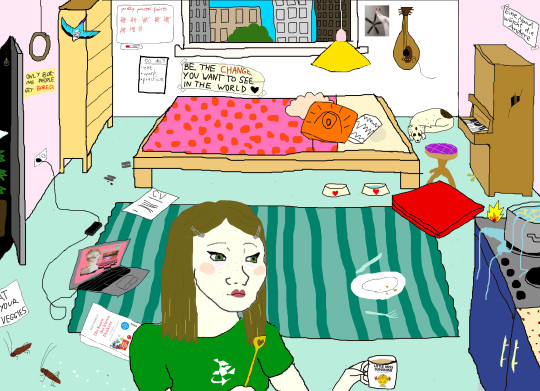
self portrait as PPP
#art#neetcore#artists on tumblr#ppp#pretty princess#pretty princess points#4chan#femcel#little miss sunshine#känguru der mathematik#be the change#roach#vaporwave#berlin#self portrait#moyra davey
5 notes
·
View notes
Photo

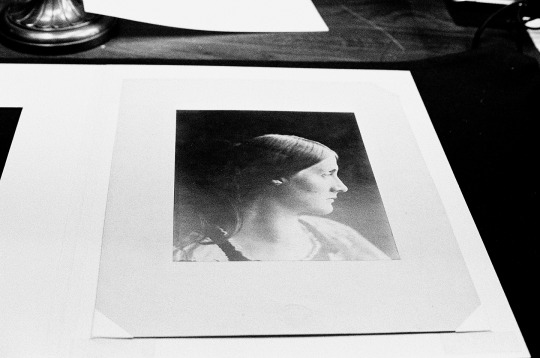


Walking with Nandita
By Moyra Davey
Here was the soup. It was a plain gravy soup. There was nothing to stir the fancy in that. One could have seen through the transparent liquid any pattern that there might have been on the plate itself. But there was no pattern. The plate was plain.
—Virginia Woolf, “A Room of One’s Own” (1929)
New York City, 157th Street
I am trying to think “language or hunger,” but I inevitably supplant hunger with eating, not eating, and shitting, all of which differ from hunger. Hunger is abstract, and my mind goes to things that are concrete.
Alejandra Pizarnik’s Diarios are pure poetry. I made the rounds of Paris bookstores till I found a single copy of the beautiful José Corti paperback with Pizarnik’s face on it. She is pulling a book off a high shelf and staring back at the camera, at us. I kept this book on a skinny Chippendale bookcase next to my bed with the cover facing out for several years so that I might meet her soulful gaze daily. I read a hundred pages or so before standing the book up like that. I was blown away by the diaries, but they are also inescapably dark. For Pizarnik, suicide was not a question of if but when, and she wrote about it almost daily, as though death was her little friend. She envied Virginia Woolf.
Hungry, thirsty, in need of stimulants, Pizarnik’s appetites and cravings were outsized. She hated herself after lunch and dinner, and wrote: “To not eat I must be happy. And I cannot be happy if I am fat.”
In my bones I understand Pizarnik’s tautology, but my mind needs to metabolize it over and over. I memorize it; it slips away.
Here is Alison Strayer’s lovely spin (Pizarnik’s idea somewhat teased out): “to write, driven by inspiration, you have to be thin and fleet, and to be thin and fleet you have to write, driven by inspiration. A conundrum.”
In her 1975 film Je tu il elle (I, You, He, She), Chantal Akerman shovels powdered sugar into her mouth while writing lying down—she is composing and revising a very long letter. The entire bag of sugar is ingested, spoonful by spoonful, to fuel the manic, around-the-clock writing. As viewers of her film, we bear witness to what is surely one of the most sustained and inspired moments of self-abuse in the service of avant-garde, materialist cinema.
Conversely, when Virginia Woolf succumbed to periods of so-called madness, the treatment consisted of denying her both language and hunger. She was not permitted to read or write, and she was made to consume excessive quantities of meat and milk. Her intellect was starved, and her naturally thin frame was fattened against her will. According to her great-niece, Emma Woolf, the regimen consisted of: “Four or five pints of milk daily, as well as cutlets, liquid malt extract and beef tea.”
Woolf appears gaunt in some of her photographs. Like many writers, she probably didn’t experience hunger when she was writing. She was prolific, and it is likely that language evacuated bodily hunger for a good portion of her life. Her great-niece has speculated that Woolf was anorexic, but if that’s the case I’d wager only in the sense that she had no appetite. Though who knows. Forced to bulk up, she might have developed a fear of fat.
Woolf wrote about food, most famously in “A Room of One’s Own.” She describes the bland meal served in the dining hall of a women’s college and speculates on the necessary (and there absent) connection between stimulation of the palate and stimulation of the mind. In “Evening over Sussex” she describes the comfort food that awaits her after a long day of travel and walking, and no doubt writing parts of the namesake essay in her head.
In the episode of Ulysses known as “Calypso,” which begins with a very large printed “M,” Leopold Bloom, after his breakfast of grilled kidneys, famously retires to the outhouse where he reads two columns of the newspaper and produces one or two excremental pillars of his own. Evacuated and grateful, he nonetheless envies the writer of the article who was paid “at the rate of one guinea a column.”
American artist Pope.L masticates the Wall Street Journal and allegedly washes it down with milk while sitting atop a toilet perched on a tower.
Canadian poet Elizabeth Smart, living in England, makes a New Year’s resolution list for the year 1945. Below are the first seven items listed:
1) Keep a diary or Daily Notebook.
2) Keep Accounts and never spend more than £20 a month on living (and partly living).
3) Keep the children Prettily dressed always.
4) Keep Everything Clean.
5) Answer all letters within three days.
6) Keep bowels open.
7) Have a baby. [checked] Sebastian 16 April 1945.
Discipline, money/frugality, cleanliness, punctuality, open bowels (which I’m sure Smart meant literally, but I’d also infer an implied wish for writing to flow more readily), and having a baby form the top priorities. Smart had four babies all by the same man, George Barker, who’d never consent to live with her, nor would he let her go, thus keeping her in a decades-long state of unrequited craving and misery.
Writing at the end of her life, in a state of relative isolation, photographer Julia Margaret Cameron was clear about her needs: “I feel it is as necessary to give a hungry heart a letter as a hungry body a slice of bread.”
continued...
19 notes
·
View notes
Photo
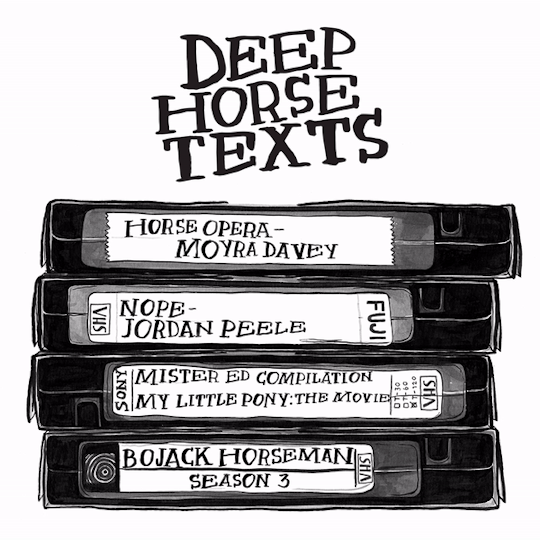
My dream-stack of equine-adjacent VHS tapes.
#deephorsetexts#horses#horse opera#moyra davey#nope#jordan peele#mister ed#my little pony#bojack horseman#VHS#hazel meyer
8 notes
·
View notes
Text
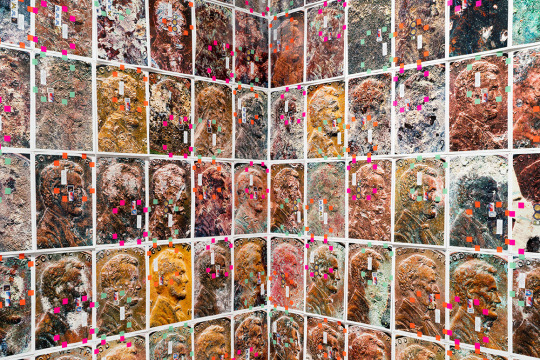
25 notes
·
View notes
Text
instagram
5 notes
·
View notes
Photo

Moyra Davey
Portrait / Landscape
Galerie Buchholz, Berlin
August 30 – October 21, 2017
13 notes
·
View notes
